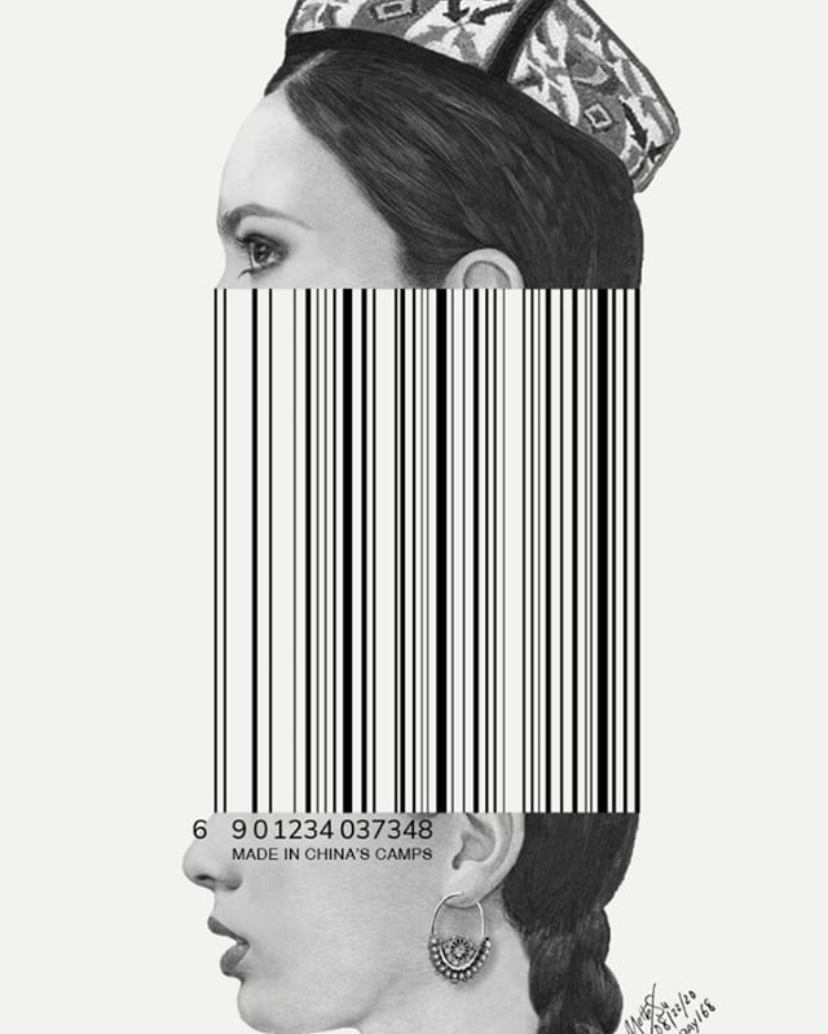Help stop complicity in Uyghur forced labor
It has been over two years since the Chinese concentration camps have become much more recognized on the news and by international audiences. Uyghurs are a Turkic ethnic group native to East Turkestan who are victims of these horrendous camps, including other Turkic ethnic groups such as Kazakh and Kyrgyz. Multiple sources estimate the numbers to be from 1-3 million, while Uyghur activists say it’s much more.
As they stay in cells that are meant for few but holds dozens, detainees are subject to torture tactics the Chinese Comunist Party (CCP) inflicts on them including indoctrination, sterilization, beatings, rape and much more. Although Uyghurs are indigenous to East Turkestan, China currently occupies it and has renamed it to Xinjiang, which translates to “new territory” in Chinese.
“The situation is much, much worse than what is being reported. The Uyghur people have disappeared. Death is everywhere right now,” says Dr. Erkin Sidick, a Uyghur American who is the President of the Uyghur Projects Foundation and senior advisor to the World Uyghur Congress.
“A Government official in Xinjiang recently told Sidick that, in his county, where there was once a population of 92,000 Uyghur people in 2016, there remain only 20,000 today. More than 80% of the population has disappeared in four years,” reported CJ Werleman.
As Uyghurs are disappearing families are left with nothing but memories and pictures of loved ones longing for their release and return. Other than the CCP wanting to create a land with citizens of Chinese origin and CCP ideology, China gives us no clear explanation regarding their incentives. They see anyone with the belief of Islam as an “illness,” and want Uyghurs to assimilate into a Chinese identity by turning East Turkestan into a tourist area for people to explore “Chinese” culture. The camps indoctrinate them and children become orphans who have to attend Chinese schools apart from other Chinese students, this is where the brainwashing comes in.
Now, brands are allegedly included in contributing to Uyghur forced labor. Australian Strategic Policy Institute’s report titled “Uyghurs for Sale” included well known brands such as Nike, Fila, Puma, Adidas, Microsoft, Sony, Jaguar and BMW in their supply chain graphs. China is one of the worlds biggest cotton producers and 80% of this cotton comes from East Turkestan. With cotton sourced from brands and clothing, it should not be tolerated as consumers for these products are high.
Raphaël Glucksmann, a member of the European Parliament, is working with some of these brands — Nike, Zara and H&M — to discuss transparency concerning the sourcing of their products.
The Uyghurs are indigenous to East Turkestan, their culture, food, cities and Mosques are all authentic as well as significant. Many Uyghur activists and people are preserving their culture as much as they can despite being miles from home. Subhi Bora, an Australian Uyghur/ Uzbek, who went to Uzbekistan with Nadir Nahdi, owner of BENI Lab, a creative platform, to film the Doppi Project, a cultural project available to watch on YouTube is one of these activists.
With religion, culture, identity and beliefs being a target in China it is a distraught feeling to see your ancestors’ land be occupied while their authentic embroideries and cultural garments are appropriated by the Chinese Communist Party. In addition to this, knowing the clothes I may be wearing were possibly made by my Uyghur people, our Uyghur people, is an unacceptable feeling, as we do not know the measures the Chinese Communist Party takes to implement Uyghur forced labor throughout East Turkestan. I was in denial that some of my favorite and only brands I shop from could be sourced from Uyghur tears. As I searched for alternatives, I found myself distrusting every product I see in stores.
With more and more testimonies by ex-detainees becoming public, the millions of Uyghurs missing and holy places being shut down and banned from performing prayer in must be defined and recognized as a religious and ethnic genocide.
The CCP is making sure the presence of Uyghur identity and freedom of expression of beliefs is not welcome in their manmade ideology of “Xinjiang,” which excludes Uyghur identity and freedom of religion.
From the torture methods listed, and now all of these brands alleged to be sourcing from forced labor, the dehumanization of Uyghurs and Turkic ethnic groups is blatant. The CCP is in the process of assimilating the rest of China into East Turkestan, taking it far from its independence and its freedom.
These brands may be some of the many brands we use in our lives and finding alternatives may be tough, very tough. Boycotting these brands is making an important statement that proves we will not tolerate human rights violations. While this may be a hard step for us to take, researching alternatives to shop from is some of the easy sacrifices we need to make for humanity. This is not a them problem, it’s an us problem.
It doesn’t stop with one person boycotting these brands, but the majority. Brands that stand in solidarity for human rights such as Nike, need to be brought to attention. There are many brands on this list, but we must focus on a few for our efforts to be more effective. When you make the decision to stop shopping from these brands, you need to do it in an influential way so your community follows the same steps.
Remember, no matter how much you love these brands this boycotting is only temporary. Big brands such as Adidas and H&M said they would end ties and Calvin Klein and Tommy Hilfiger said they agreed to end any commercial relationship with their suppliers within the next 12 months. “Xinjiang and Western China look so far from our lives,” Glucksmann told Vogue Business. “Our job is to show that what you are wearing is connected to the worst crime against humanity of today.”



